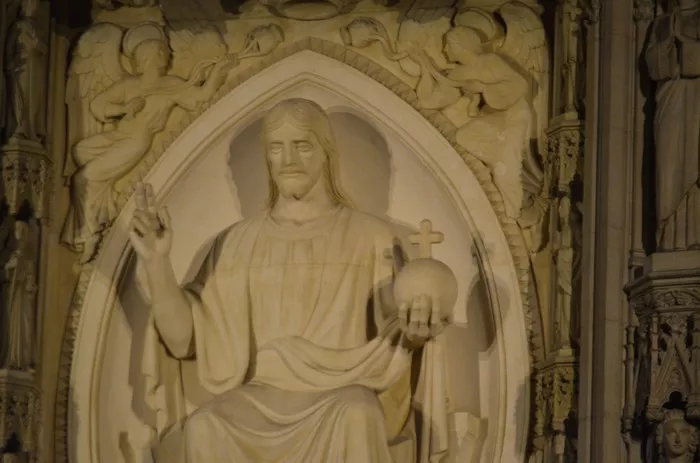The temple holds a significant place in the life and ministry of Jesus Christ. Throughout the New Testament, numerous accounts portray Jesus visiting the temple in Jerusalem. These visits often sparked intense interactions with religious leaders and symbolized pivotal moments in his mission. Understanding why Jesus frequented the temple provides profound insights into his teachings, actions, and the broader theological significance of his earthly ministry.
Historical and Cultural Context
To grasp the significance of Jesus’ visits to the temple, one must first consider the historical and cultural context of first-century Judaism. The temple in Jerusalem was the focal point of Jewish religious life, serving as the central site for worship, sacrifice, and communal gatherings. According to Jewish law, devout Jews were required to make pilgrimages to the temple for various feasts and festivals, including Passover, Pentecost, and the Feast of Tabernacles.
Jesus’ Affirmation of Jewish Tradition
Contrary to some misconceptions, Jesus did not seek to abolish Jewish religious practices or institutions. Instead, his visits to the temple underscored his adherence to Jewish tradition and his commitment to the spiritual welfare of his fellow Jews. In Matthew 5:17, Jesus explicitly states, “Do not think that I have come to abolish the Law or the Prophets; I have not come to abolish them but to fulfill them.” His actions in the temple affirm his respect for Jewish customs and his desire to fulfill the prophetic promises of the Old Testament.
Confrontation with Religious Authorities
Many of Jesus’ most notable interactions at the temple involved confrontations with religious authorities, particularly the Pharisees and Sadducees. These confrontations often revolved around issues of religious authority, purity, and interpretation of the law. In Matthew 21:12-13, Jesus enters the temple and drives out those buying and selling, declaring, “My house will be called a house of prayer, but you are making it ‘a den of robbers.'” This bold act challenged the corruption and exploitation that had infiltrated the temple’s practices, earning him the ire of the religious elite.
Symbolism and Foreshadowing
Jesus’ actions in the temple were laden with symbolism and foreshadowing, pointing towards greater spiritual truths and the ultimate purpose of his ministry. For instance, his cleansing of the temple symbolized his role as the ultimate sacrifice, purifying the spiritual house of God. Additionally, Jesus’ presence in the temple during Passover underscored his identification as the Paschal Lamb, whose sacrificial death would bring redemption and liberation from sin.
Teaching and Instruction
The temple also served as a platform for Jesus to impart crucial teachings and instructions to his disciples and the crowds gathered there. In Luke 2:46-47, a young Jesus is found in the temple, discussing and asking questions among the teachers. This early instance foreshadows Jesus’ later role as a rabbi and teacher, using the temple as a space for theological dialogue and instruction. His teachings in the temple challenged conventional wisdom and offered profound insights into the nature of God’s kingdom and the path to righteousness.
Communal and Spiritual Renewal
Beyond individual encounters, Jesus’ presence in the temple facilitated communal and spiritual renewal among the Jewish people. His acts of healing and mercy demonstrated God’s compassion and power, renewing hope among the marginalized and oppressed. Furthermore, his teachings on love, forgiveness, and reconciliation promoted unity and harmony within the community, challenging the divisive tendencies prevalent in religious institutions.
The Temple as a Foreshadowing of Christ
Ultimately, Jesus’ visits to the temple foreshadowed his identity as the ultimate fulfillment of Jewish religious practices and institutions. In John 2:19, Jesus cryptically declares, “Destroy this temple, and I will raise it again in three days.” While initially misunderstood as referring to the physical temple, this statement alluded to his impending death and resurrection, wherein his body would become the true temple of God. Through his sacrificial death and triumphant resurrection, Jesus inaugurated a new covenant, wherein believers would become living temples indwelt by the Holy Spirit.
Conclusion
Jesus’ visits to the temple were multifaceted, embodying themes of tradition, confrontation, symbolism, teaching, renewal, and foreshadowing. Far from arbitrary or incidental, these visits were integral to his earthly ministry, revealing profound truths about his identity, mission, and the kingdom of God. As contemporary followers of Jesus, we can learn much from his example in the temple, cultivating reverence for God’s presence, challenging injustice, and proclaiming the transformative power of the gospel.


